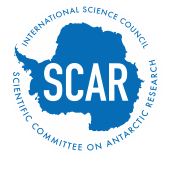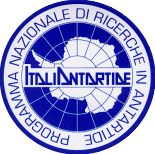|
Name ID: 108156
Place ID: 2534
separated from NW Alexander Island by Wilkins Sound and Wilkins Ice Shelf, was discovered by FAE, 1908-10, on 11 January 1910, when its N coast was sighted but its insularity not established; at the suggestion of E.S. Balch, named Terre Charcot after Dr Jean-Martin Charcot (1825-93), French neurologist and Professor of Pathological Anatomy, University of Paris; father of J.-B. Charcot, Commander of FAE (Charcot Bay, q.v.) (Charcot, 1910, p.344, map facing p.370; [1911b], p.286-87). Charcot L. (Nordenskjöld, 1911b, Karte 1). Charcot Land (Mill, 1912, map following p.420; BA chart 3175, 9.x.1914). Jean Charcot Land (Easton, 1913, map facing p.278). Charcot Coast (Shackleton, 1919, end map). Charcot Kust (Shackleton, [1921], end map). Tierra de Charcot (Hoxmark, 1924). Charcots Land (HA chart, 1927). The insularity of the feature was proved by Wilkins who flew around it, 29 December 1929 (Wilkins, 1930, p.371-74 and Figs. 19-22, p.375-76). Charcotöen (Aagaard, 1930, end map). Charkot [sic] -Land (Filchner, 1930, map p.111). Charcot Ö (Hansen, atlas, 1936, chart 4). Île Charcot, Terre de Hearst (Hearst Island, q.v.), in error (France. SHM, 1937, p.410). Isla Charcot (Argentina. MM chart 65, 1940; Pierrou, 1970, p.284; Chile. IHA, 1974, p.73). Charcot Island ([in 70 10'S 75 00'W] BA chart 3175, 1.iii.1940; APC, 1955, p.7; [in 69 45'S 75 15'W] Searle, 1963, Fig. 2 following p.166, end map; DOS 813 British Antarctic Territory sheet, 1963; [co-ordinates and outline corrected from USLANDSAT imagery of February 1979] BAS sheet Misc. 2, 1981; APC, 1982, p.3). A flight over the island was made by USAS, 22 December 1940 (English, 1941, p.471). Charcot Insel (Stocks, chart, 1941). Charcot Ön (Liljeqvist, 1944, map facing p.244). Charcot-Øya (Aagaard, 1944, p.31). Charcot Öy (Hansen, chart [no number], 1947). Parts of the island were photographed from the air on USN Operation "Highjump" on 8 February 1947 and by RARE on 21 November 1947, when a landing was made (Ronne, 1949, p.235-36). Charcotin Saari (Andersson, 1948, end map). Tierra Charcot (Sgrosso, 1948, p.182). Ostrov Sharko (Aleyner, 1949, map p.343). Terra di Charcot (Zavatti, 1952, p.508). Wyspa Charcota (Macowski, 1953, map p.4). Charcotsön (Frödin, 1956, Front.). Charcot Eiland (Knapp, 1958, p.570). Charcotv Ostrov (Bártl, 1958, map facing p.144). Isola Charcot (Zavatti, 1958, Tav. 6). The island was mapped by FIDS in 1959 from air photographs. Poluostrov [sic] Sharko (Soviet Union. AA, 1966, Pl. 24). A temporary scientific station and airstrip were established by CAE on the NE coast of the island at 69 43'S 75 00'W in November 1982 (Times, 22 November 1982).
|

